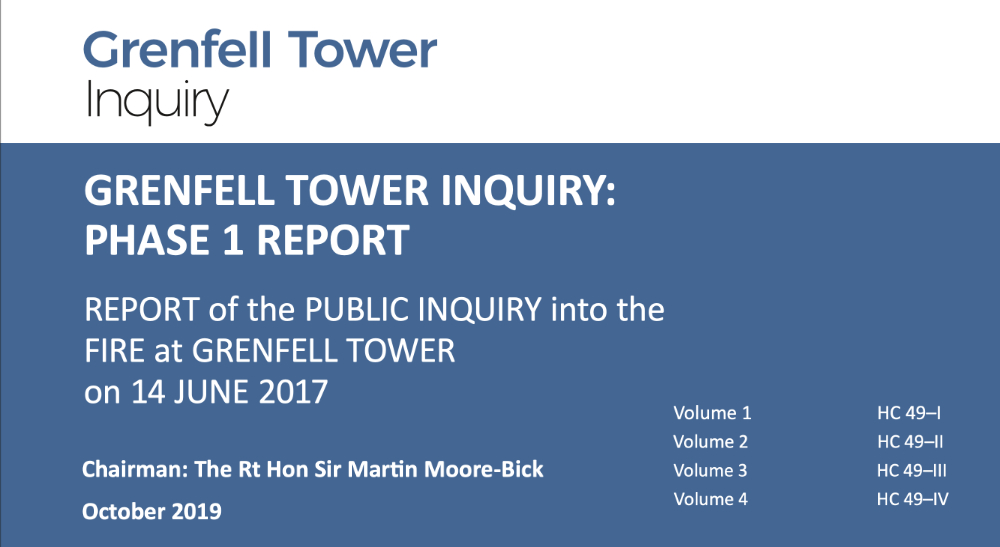Grenfell Tower Inquiry Phase 1 recommendations progress report
Contents |
[edit] Progress against the Grenfell Tower Inquiry Phase 1 recommendations, September 2024
[edit] Thematic update number eight
The government has provided a document on the progress made to implement the recommendations from the Grenfell Tower Public Inquiry Phase 1 report. The report includes updates from the relevant government departments and assurances received from relevant public authorities - including the London Fire Brigade (LFB), National Fire Chiefs Council, and other emergency services - on their progress to address and implement the Phase 1 recommendations directed to them. The document is the eight thematic update on the progress, it does not reflect finalised Government policy and all outstanding work is quoted as being due to be finished by April 2025.
The Home Office has worked closely with London Fire Brigade and the National Fire Chiefs Council to monitor progress by Fire and Rescue Services (FRSs). Progress continues to be made by all FRSs towards addressing the remaining Grenfell Phase 1 recommendations, with these now closed by all but one or two services, with all outstanding work due to be finished by April 2025 (more detail below).
More broadly, reforms to building and fire safety legislation have been made in dealing with unsafe cladding in England. All residential buildings above 11 metres in height in England have a pathway to fix unsafe cladding, protecting leaseholders from these costs. This is either through a taxpayer-funded scheme, a developer-funded scheme, or social housing provider-led remediation. Where developers or building owners are not currently funding cladding remediation, the Government has committed £5.1 billion to ensure that people are safe and feel safe in their homes.
[edit] Remediation schemes underway
- the ACM Cladding Remediation fund: which has been open since 2018 and covers buildings with the most dangerous type of cladding like that attached to Grenfell Tower;
- the Building Safety Fund: first opened in 2020 for buildings over 18 metres with other forms of unsafe cladding;
- the Cladding Safety Scheme: which was fully opened in July for buildings between 11 and 18 metres and is also open to new applications for 18m+ buildings outside of London;
Developers have assumed direct responsibility for remediating all life-critical fire safety defects in more than 1,000 buildings, and;
The Government continues to work with the social housing sector to strengthen social housing remediation data and with the Regulator for Social Housing in order to gain assurance that owners of social housing buildings are meeting their obligations to identify and remediate building safety risks at pace.
The Building Safety Remediation monthly data release includes data across all the above schemes and can be found at GOV.UK.
Reforms introduced to the Building Safety Act give residents and homeowners more rights, powers, and protections.
From April 2024, the Building Safety Regulator (BSR) has been the regulator for the building control profession. The new regime for design and construction of higher-risk buildings came into force in October 2023 and existing occupied higher-risk buildings were also legally required to be registered with the Regulator by October 2023.
Further duties were placed on ‘accountable persons’ (the person responsible for an occupied higher-risk building) in January 2024, and the more stringent regime for occupied higher-risk buildings has now been introduced in full and new duties will shortly be placed on accountable persons. Residents have clear routes for raising concerns, first with their accountable person, and if the issue isn’t resolved with the Regulator. The Regulator has commenced the Building Assessment Certification process –and has directed accountable persons for the first tranche of higher-risk buildings to submit their safety case report for scrutiny and approval.
[edit] Grenfell Tower Inquiry Phase 1 Report recommendation responses by theme
Click on the links below to review the progress made by Government, London Fire Brigade, the National Fire Chiefs Council, fire and rescue authorities and other public authorities in implementing the Grenfell Tower Inquiry Phase 1 recommendations. This information was last updated on 18 September 2024. (images and links from Fire England)
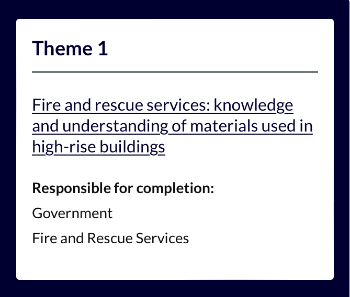
|

|
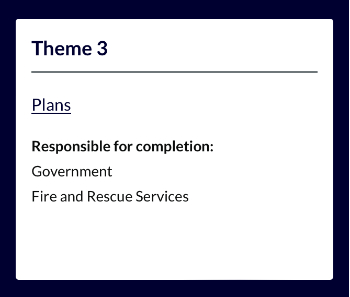
|
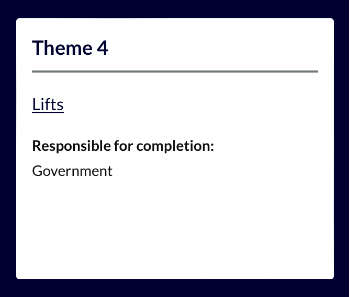
|
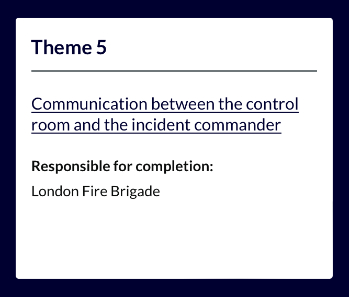
|
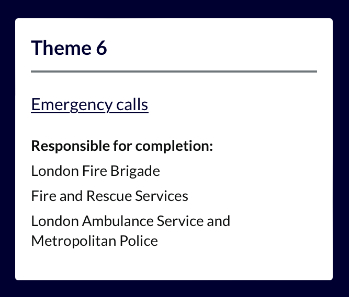
|
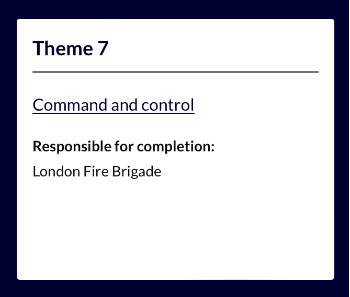
|
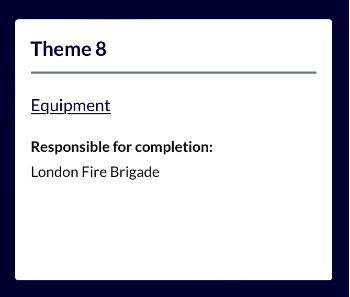
|

|

|
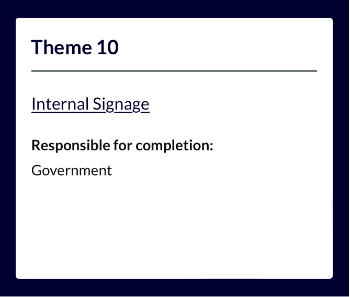
|

|
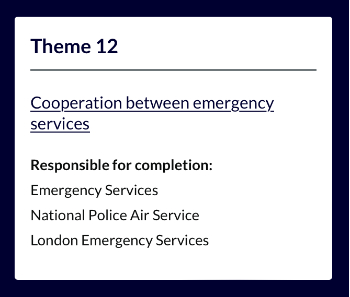
|

|
[edit] Summary of progress against Inquiry recommendations
Of the Inquiry’s 46 Phase 1 recommendations, 39 have now been completed.
Out of 15 recommendations directed by the Inquiry in 2019 to Government, 11 have been completed. On 2 September 2024 the Government set out a clear way forward on the remaining four recommendations which centre around evacuation, including evacuation plans and evacuation alert systems (EAS) and mandating PEEPs (2 recommendations).
The Home Office will bring forward proposals later in the Autumn to improve the fire safety and evacuation of disabled/vulnerable residents in high-rise and higher-risk residential buildings in England in response to the Grenfell Tower Inquiry’s Phase 1 recommendations that relate to Personal Emergency Evacuation Plans or PEEPs. These proposals will be called ‘Residential PEEPs’.
The Government has made progress on delivering recommendation 33.22[d] of the Grenfell Tower Inquiry’s Phase 1 report, on Evacuation Alert Systems (‘sounders’) for new builds, through an amendment to statutory guidance to the building regulations in relation to high-rise residential building design (requiring sounders to be fitted in new buildings over 18 metres in height).
The Government will consider further the second part of the recommendation, relating to existing buildings, in light of further evidence or recommendations in the Inquiry’s Phase 2 report. This will, like the work on fire safety improvements nationally, be part of the important task of reducing the likelihood and impact of future fires.
On 16 May 2022, the Fire Safety Act 2021 was fully commenced, addressing any legal ambiguity that responsible persons are required to update Fire Risk Assessments so that external walls and flat entrance doors are taken into account.
On 23 January 2023, the Fire Safety (England) Regulations 2022 came into force, that placed additional requirements on responsible persons for multi-occupied residential buildings to improve the safety of residents whilst also ensuring that FRSs have information required to provide an effective operational response in the event of a fire in a high-rise residential building.
On 5 February 2024, National Evacuation Guidelines for carrying out partial or total evacuations of high-rise residential buildings were published. It is now for NFCC and FRSs to consider how best to draw on the guidelines in the development of their operational guidance.
This article appears on the UK Gov website as "Progress against the Grenfell Tower Inquiry Phase 1 recommendations, September 2024" with the accessible version on the Fire England website as "Grenfell Tower Inquiry Phase 1 Report recommendations – Progress on implementation" both dated 19 September 2024.
[edit] Related articles on Designing Buildings
- 2022 changes to fire safety guidance and building regulations.
- ACM cladding.
- Approved Document B.
- BS 8414 Fire performance of external cladding systems.
- Building a safer future: an implementation plan.
- Celotex RS5000 PIR insulation.
- CIAT response to Grenfell inquiry.
- Construction quality management guide.
- Fire at the Cube, Bolton.
- Fire performance of external thermal insulation for walls of multistorey buildings, third edition (BR 135).
- Grenfell Tower Inquiry Phase 1 Report.
- Grenfell Phase 2 final report for construction at a glance
- Grenfell Tower articles.
- Grenfell Tower fire
- Grenfell Tower independent expert advisory panel.
- Grenfell Tower Inquiry Phase 1 Report.
- ICE Grenfell Tower review.
- Independent review of the building regulations and fire safety.
- Joint Competent Authority.
- Lakanal House fire.
- National construction products regulator established.
- Ronan Point.
- The Regulatory Reform (Fire Safety) Order 2005.
- Torre Windsor office building fire.
Quick links
[edit] Legislation and standards
Fire Safety (England) Regulations 2022
Regulatory Reform (Fire Safety) Order 2005
Secondary legislation linked to the Building Safety Act
Building safety in Northern Ireland
[edit] Dutyholders and competencies
BSI Built Environment Competence Standards
Competence standards (PAS 8671, 8672, 8673)
Industry Competence Steering Group
[edit] Regulators
National Regulator of Construction Products
[edit] Fire safety
Independent Grenfell Tower Inquiry
[edit] Other pages
Building Safety Wiki is brought to you courtesy of:





